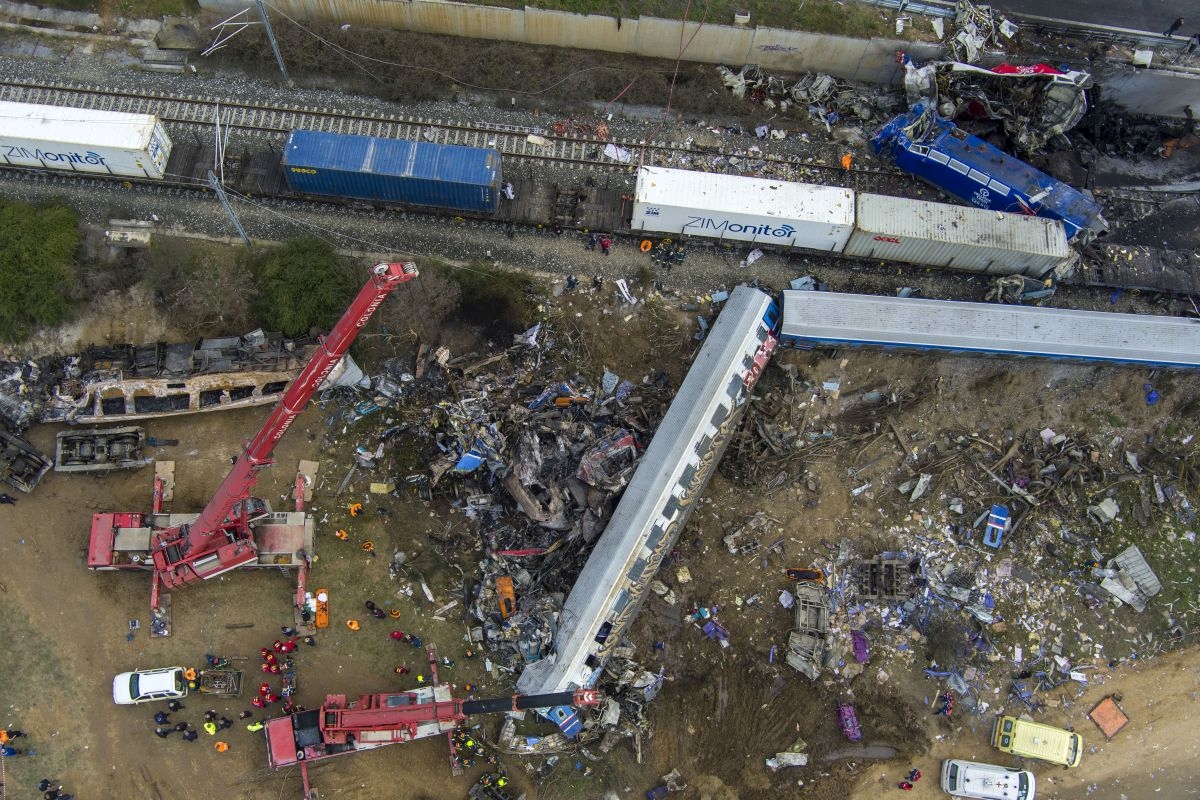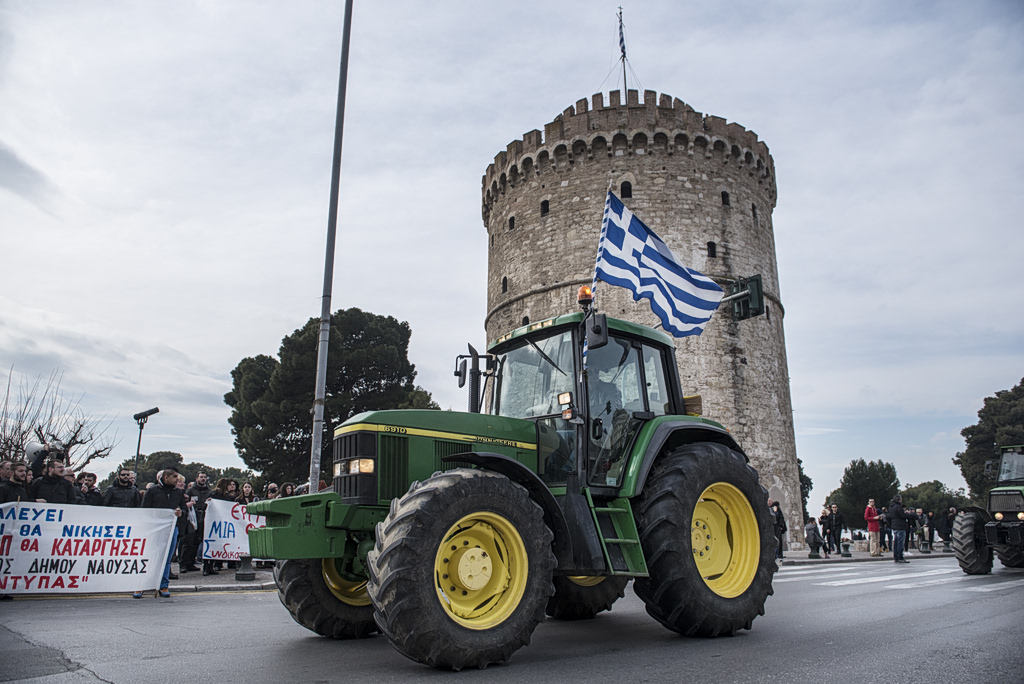A “fireball” and a related conflagration that completely destroyed an entire rail carriage (B2) of the ill-fated passenger train that collided with a freight train – the deadly Tempi disaster – was due to electrical arcs and a short circuit in the overhead power line and transformer.
The specific conclusion is included in an accident report compiled by private rail company Hellenic Train, which operated both the passenger and freight trains that collided on the evening of Feb. 28, 2023 at the southern entrance of the Tempi valley in north-central Greece.
The report attributed to the company, a subsidiary of Italy’s FS, was published on Sunday by the site ethnos.gr.
An “unfortunate coincidence”, as purportedly cited by the report, is the fact that the electrical arcs and short circuits in the overhead power line occurred close to or above the passenger train’s transformer.
Other short circuits of capacitators caused the ignition and explosion of coolant liquids that also ignited and burned out, in turn.
According to the media outlet, Hellenic Train presented the report to relevant judicial and civil protection authorities investigating the worst rail accident in Greece’s history.
The report is signed by Belgian rail accident expert Yves Carton, who was hired by Hellenic Train to investigate the rail disaster.
An excerpt posted by the news site, in Greek, notes that “…it’s with a reasonably high probability that we can conclude that the explosion was the result of electrical arcs and short circuiting of the chain link contact line, which occurred very close to or above the transformer, with additional and subsequent short circuits of the capacitors, sparking an ignition and explosion of the coolant, which then burned (2.4 tons) until depleted.”
Another conclusion of the report, per ethnos.gr, is that “numerous indications show that the transformer, and more specifically the coolant liquid, is the primary source of the explosion and fire.”
The technical report states that the B2 rail carriage was completely engulfed in fire because a portion of the latter was located directly above the “fire zone” of the transformer. The fire, according to the conclusion, spread horizontally throughout the entire carriage due the materials (seats, interior materials etc.) of the carriage itself and was eventually fed by other flammable liquids emanating from the batteries and coolants in the air conditioning.
The findings, if confirmed, would mean that a widely circulated scenario, whereby the fireball – as seen in a few seconds of grainy video – and fires that immediately erupted after the two-train collision, were not caused by an alleged contraband cargo on the freight train igniting.



